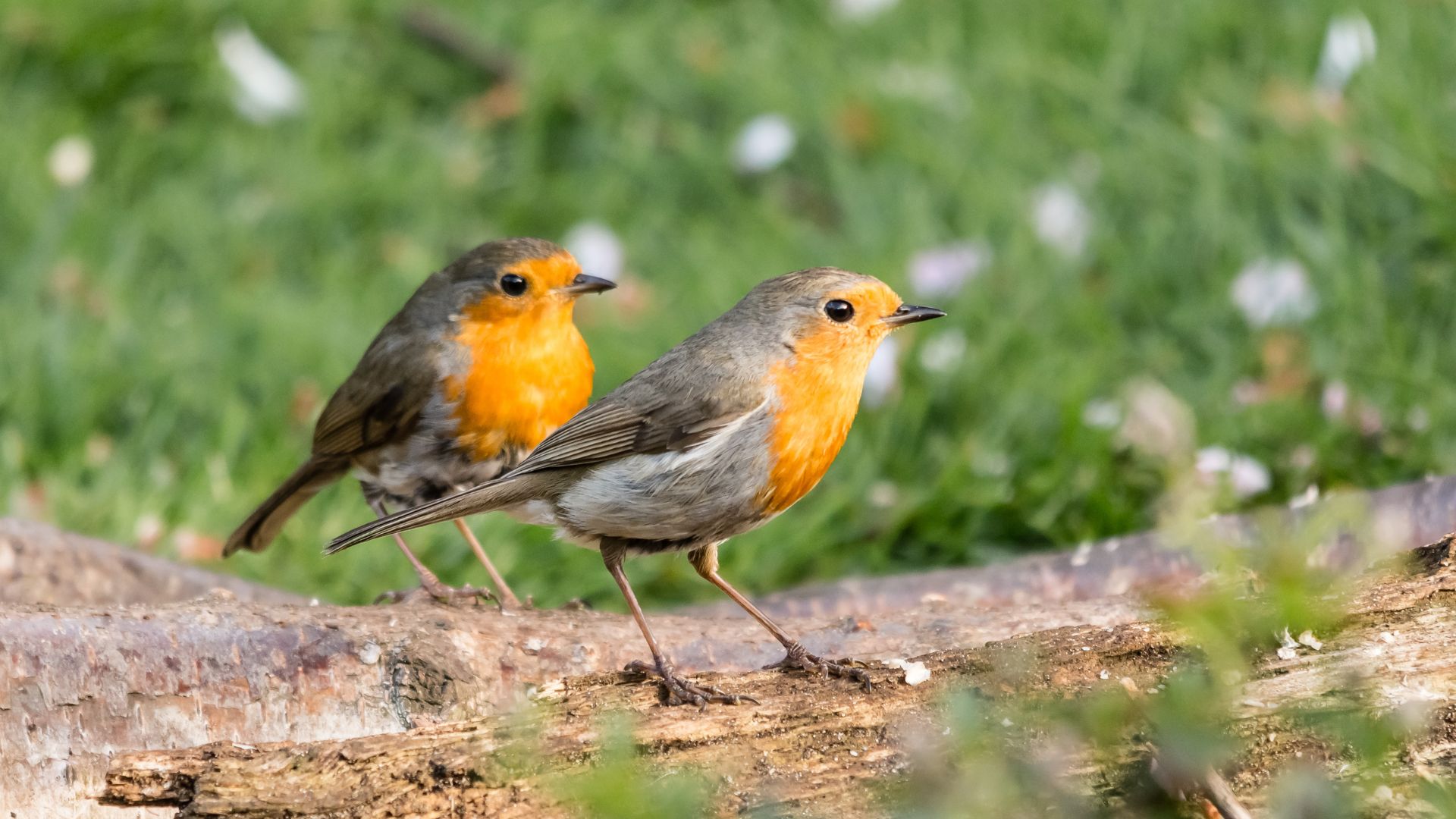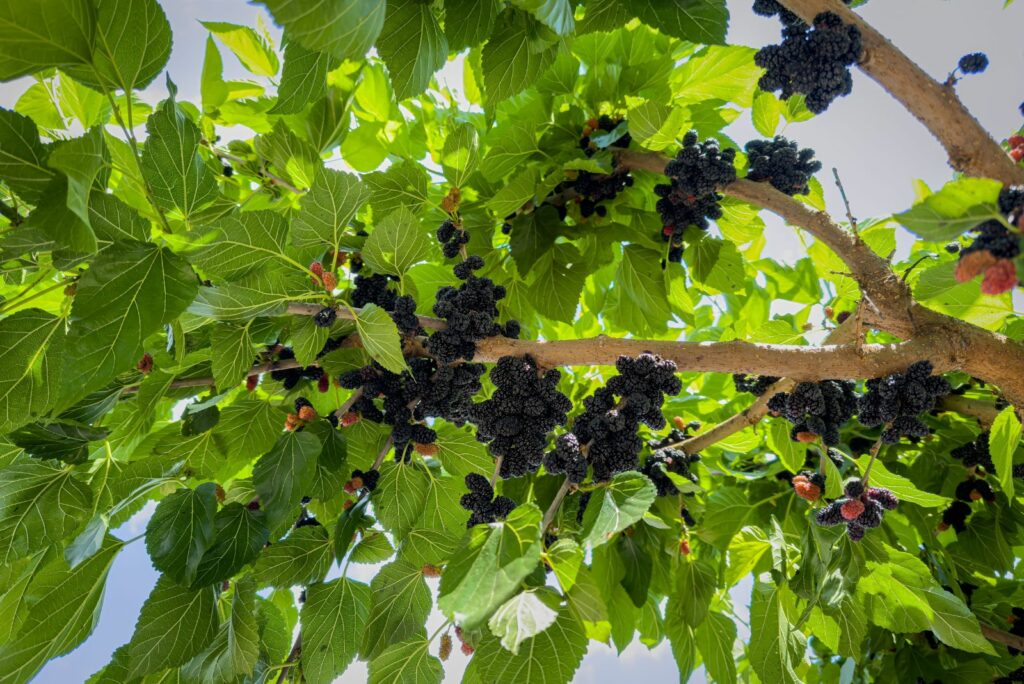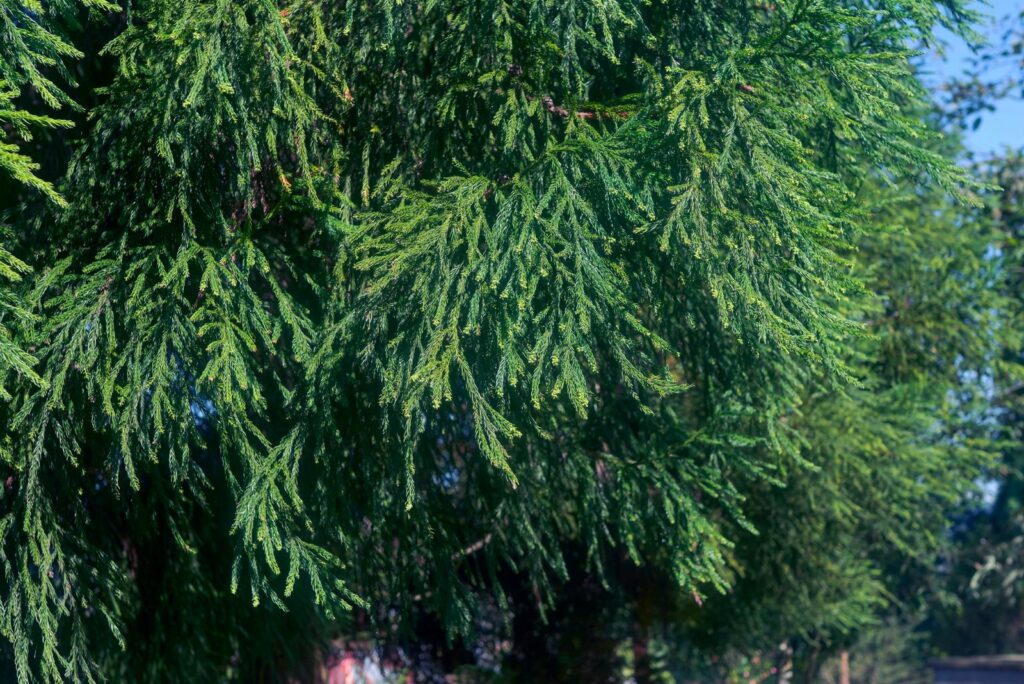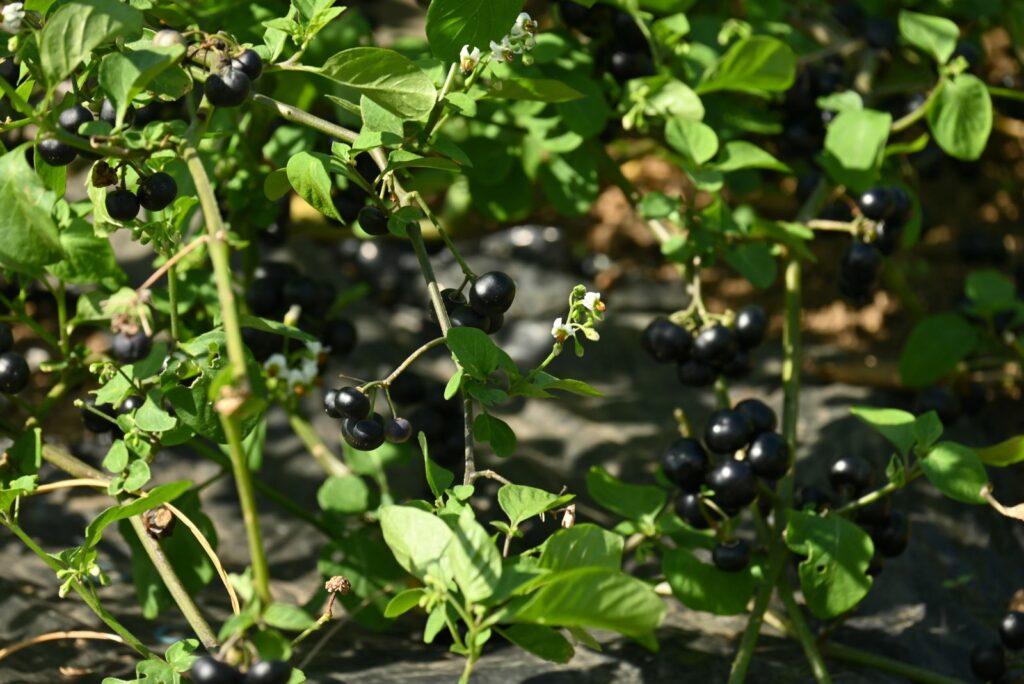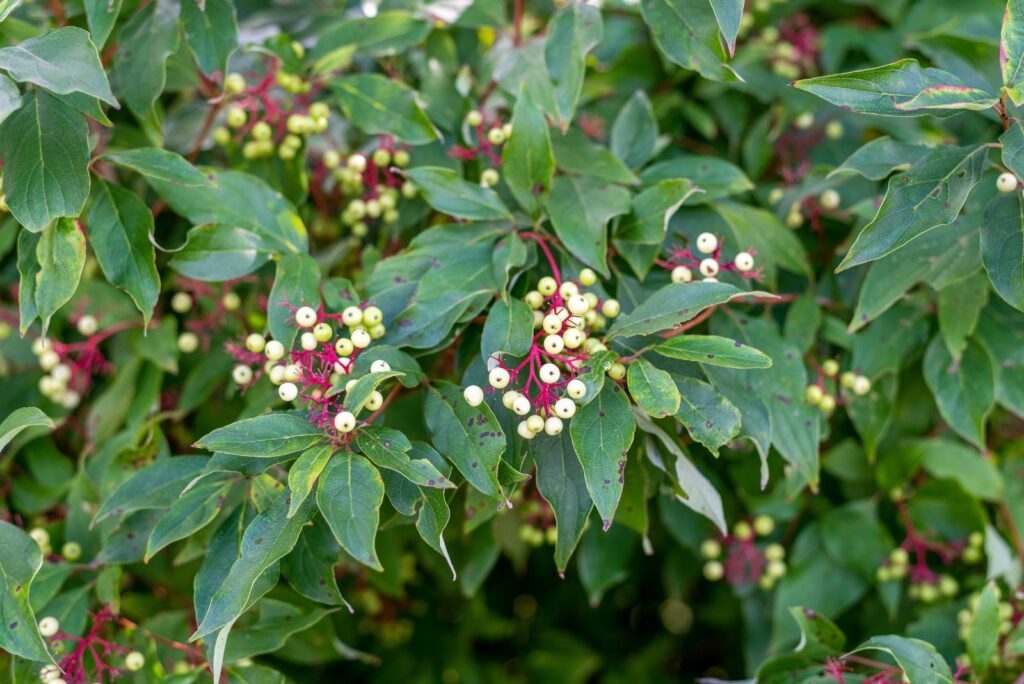I absolutely love watching birds flutter around my garden, but robins have a special place in my heart. There’s just something about their bright orange feathers and cheerful songs that never fails to lift my spirits!
Attracting them to your yard is easier than you think – just plant the right trees and shrubs, and they’ll be setting up nests soon enough.
Robins start nesting as early as January, and they adore evergreens like conifers for shelter when deciduous trees are all bare. But don’t skip out on those leafy trees as well, especially in late summer and fall when they offer fruit that robins can’t resist.
To keep these birds happy year-round, plant trees that provide food at different times, starting with:
1. Mulberry Trees
The mulberry tree is at the top of the list for so many reasons!
Not only does it look great and provide shade, but it also gives you delicious and sweet fruits – and, of course, it’s a robin magnet.
My grandparents had one in their yard, and it was always swarming with these delightful birds. Growing up, it was one of my favorite spots to watch robins fly around and snack on those juicy berries.
Truth be told, mulberries can sometimes be messy. The fruit stains, and robins leave behind purple droppings after feasting. To avoid a mess on your patio or furniture, plant the tree at the back of your yard.
They’re easy to grow, thrive in full sun or partial shade, and can handle both rich and poor soils.
Messy, yes… but mulberries and robins will definitely liven up your garden!
2. Robins Love Conifers’ Dense Foliage
Robins love evergreen trees like pines, firs, and spruces because they have dense foliage that’s perfect for setting up nests. However, robins prefer deciduous trees for nesting in the fall and winter.
Still, many conifers, like red cedar and juniper, produce berries and cones that provide food for robins during colder months.
By planting these trees, you can offer birds both food and shelter year-round. Consider fast-growing options like Leyland cypress or American arborvitae for hedging.
Just be aware that some conifers have invasive roots that can damage your home’s foundation, and their oils can make them prone to burning.
So, plant them away from your house, especially if you live in wildfire-prone areas.
Also read: 15 Shade Tolerant Evergreen Trees And Shrubs + Care Guides
3. Robins Can’t Resist Huckleberries
Who doesn’t like a good ol’ huckleberry?
This evergreen shrub is a great berry-producing addition to your garden. It features shiny, attractive leaves that look great in dried arrangements or fresh bouquets.
What’s also great about huckleberry shrubs is that both the berries and leaves are delicious snacks for various wildlife. Any black berries that robins or other birds don’t touch can be turned into tasty jam (yummy!).
Most gardeners use huckleberry bushes for hedging due to their small to medium size and dense growth habit. Plus, they are super easy to grow because they can adapt to various soil types (so you can basically put them anywhere).
Just a heads up – while huckleberries attract robins, other animals such as deer, black bears, and mice are also fans.
If you have issues with wildlife raiding your garden, it might be best to think twice before planting huckleberries!
Also read: 10 Best Trees For Wildlife And Biodiversity
4. They Also Go Wild For American Highbush Cranberries
If you enjoy foraging for wild fruits, you might already know about the American highbush cranberry.
The berries typically ripen in late August and early September but often stick around through winter, providing a delicious treat for our feathered beauties.
Interestingly, despite its name, it’s not a true cranberry but belongs to the honeysuckle family.
Highbush cranberry plants are hardy in USDA zones 2 to 7 and can grow up to 15 feet tall (so your neighbors won’t get a peek into your yard!).
They adapt well to both sun and shade, so you won’t have to stress about the perfect spot in your garden. They thrive in most soil types and don’t require much watering, but they aren’t drought-tolerant, so keep that in mind!
5. Dogwood Shrubs Provide Food And Shelter For Robins
Dogwood shrubs will bring you lots of birds, including our lovely robins.
In spring and summer, its abundant leaves provide shelter, while in late summer, the tasty white berries also draw in cardinals, purple finches, and cedar waxwings.
The plant starts blooming at the beginning of summer and has fruits that stay on branches well into fall.
It thrives in USDA hardiness zones 2 to 7 but isn’t heat tolerant, so I would recommend you find a cool spot for it. This shrub prefers fertile, consistently moist soil but can also adapt to wet or dry conditions.
Mix and match a few of these trees and shrubs and you’ll get to enjoy some bird-watching right from your yard. Trust me, I’ve tried it and it’s pure joy!
Also read: Fruit And Berry Trees That Will Make Your Garden A Bird Paradise

